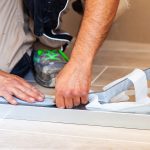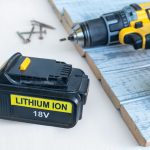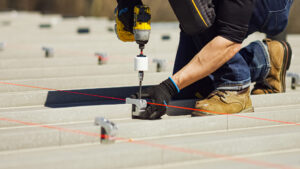
Safety is the cornerstone of any successful roofing project, especially when working on standing seam metal roofs. These roofing systems are popular for their durability and sleek design but require specialized care when installing clamps for snow retention, solar panels, or other rooftop additions. The integrity of the
roof and the safety of the workers depend on careful planning, proper equipment, and adherence to best practices. This article explores key considerations to ensure a safe and efficient installation process while highlighting the importance of using high-quality clamps.
Preparation is vital in any roof installation project, setting the tone for safety and efficiency. Before stepping foot on a roof, thoroughly inspecting the work area is critical. Roof panels should be assessed for signs of damage, corrosion, or weak spots that pose hazards during installation. Removing debris and ensuring the roof surface is dry and stable are essential to prevent slips and falls. Additionally, the weather plays a significant role in roof safety. Rain, high winds, or icy conditions can turn even the simplest task into a dangerous undertaking, so it is important to schedule work during favorable conditions. Workers should be equipped with Occupational Safety and Health Administration-compliant (OSHA)-compliant fall protection gear, such as harnesses, anchors, lanyards, and non-slip footwear to ensure stability while navigating the roof.
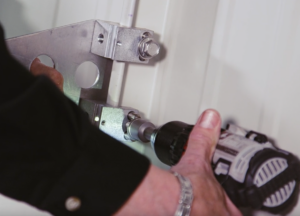
When selecting a standing seam metal roof clamp for applications where safety is critical, such as fall restraints, choosing a product specifically designed and certified to meet rigorous safety standards is essential. While some clamps excel in areas such as solar mounting or snow retention, only those tested and approved for fall protection should be used for these purposes. This is because they meet criteria such as load capacity, compatibility with roof profiles, and compliance with OSHA and American National Standards Institute (ANSI) standards.
The choice of roof clamps is another critical factor impacting the installation’s safety and success. High-quality clamps must be compatible with the specific standing seam profile and material of the roof. The best options are designed to hold securely without damaging the roof panels. For example, clamps with set screws can dent or scratch metal surfaces caused by rotational force, leading to long-term issues. Choosing a clamp with a push-pin design eliminates the damage caused by the rotational force produced by set screws. It simplifies applying equal pressure (torque) while eliminating the risk of over-tightening and ensuring a secure hold. This user-friendly feature prevents roof damage and reduces installation time, allowing workers to spend less time exposed to potential hazards on the roof.
Additionally, choosing a clamp that has been rigorously tested by third-party organizations to ensure its strength, reliability, lateral load, vibration resistance, and wind uplift ensures peace of mind for installers and building owners alike. Load testing certifies that clamps meet safety and performance requirements under specified conditions. Always verify the clamp’s rated capacity matches or exceeds the load.
Safety should always be the top priority when selecting a roof clamp for a project. It is crucial to choose a product from a company that prioritizes rigorous testing and adherence to industry-specific standards. By selecting a clamp built with safety at its core, contractors can have confidence in the performance and durability of the installation.
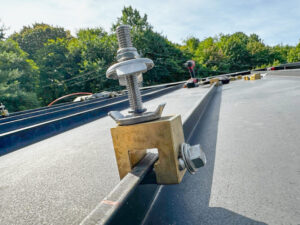
During the installation process, adhering to safe work practices is non-negotiable. Proper placement of the clamps along the seams, according to manufacturer specifications, is essential to ensure secure attachment. Using a pre-assembled clamp minimizes runaway set screws and increases efficiency. Workers should also evenly distribute weight across the roof to avoid overloading any single area, which could compromise structural integrity. Tools and materials must always be secured to prevent them from falling and creating hazards for people below. Communication among the installation team is crucial, especially in high-stakes environments like rooftops. Providing workers with radios or other communication devices allows for quick coordination and immediate response in case of emergencies. Emergency preparedness is equally important, with first aid kits readily accessible and evacuation plans in place to address any incidents promptly.
Post-installation procedures are just as crucial as the work done on the roof. A final inspection should be conducted to verify that all clamps are torqued to manufacturer specifications, securely attached, and aligned correctly. The roof itself should also be examined for any signs of damage that may have occurred during installation. Regular maintenance of the clamps and roof panels is recommended to ensure their continued performance and safety.
Over time, thermal expansion and vibration tend to cause set screws to back out. It is important to have a plan to tighten or use a clamp that is designed to self-lock when installed to torque recommendations. Relying on set screw corrosion is not safe. Products featuring a self-locking design minimize the need for frequent adjustments and can withstand even the harshest weather conditions. This long-term reliability protects the roof’s integrity and provides a safer environment for workers needing to return for future projects.
By following these best practices, installers can achieve a safer and more efficient roof clamp installation process. Investing in safety is not just a professional responsibility; it is a commitment to protecting workers and preserving the integrity of the building. When safety is prioritized, the results are always worth it—stronger roofs, satisfied clients, and a safer working environment for everyone involved.
Bradford A. Wasley is vice president of PMC Industries, Inc. and director of Total Quality. Brad is a fourth-generation manufacturer with more than 25 years of experience. AceClamp is the product line he has developed along with the PMC Industries, Inc. engineering team. Wasley can be reached at bwasley@pmcind.com




